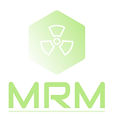
Theranostics
Why Theranostics?
Radiotheranostics leverages nanotechnology to enable a cutting edge concept that combines diagnostic imaging and therapeutic treatment into a single medicine system, designed to improve and optimize personalized medicine. By using specific radioactive isotopes and nanoparticle carriers, radiotheranostics allows for targeted imaging and treatment of disease at a cellular level, particularly cancer. This provides healthcare professionals the tools to personalize treatment plans, track the effectiveness of therapy, and calibrate treatment plans as necessary in real-time, therefore significantly improving potential patient outcomes.
Radioisotopes are elements with an unstable nucleus, resulting in radiation emission. This process is known as decay and each type of radioisotope has its own unique radiation emission properties. Nuclear Medicine utilizes the radioisotope's radiation emission properties for both diagnosis and treatment.
Diagnostic
Radioisotopes are frequently used in Positron Emission Tomography (PET) imaging technology. One such example, a Flourine-18 radioisotope is attached to a glucose analog to exploit cancer cells propensity to consume more glucose than normal cells. This enables the PET scanner to capture the gamma radiation emitted by the Flourine-18 concentrated in the cancer cells to determine location, metabolism and staging of disease.

225Ac-PSMA-617 for PSMA-Targeted α-Radiation Therapy of Metastatic Castration-Resistant Prostate Cancer. Kratochwil et al
Treatment
In Nuclear Medicine, specific radiation emission characteristics of radioisotopes are employed in patient treatment plans. One such example, Iodine-131 is taken up by the thyroid cells which enables targeted and localized cytotoxic effects to the thyroid while minimizing impact on the rest of the body.
Why Terbium-161?


The first commercial Terbium-161 product
GMP grade Terbium-161, available in 0.05M HCl Solution.
Carrier-free lanthanide (NCA) Terbium-161 is produced by neutron activation of the highly enriched Gadolinium-160 using small and medium research reactors. As a promising radionuclide for Radioligand Therapy, Terbium-161 exhibits comparable chemical characteristics to known radiolanthanides allowing utilization of current radiolabeling techniques.
From a clinical perspective, early research suggests improved anti-tumor capabilities, especially for (micro)metastasized cancers, owing to an increase in emission of Auger and conversion electrons when using terbium-161 compared to other known radiolanthanides.
Radioligand Therapy
Using PSMA and SST analogues, Terbium-161 has shown excellent bioequivalence presenting a biodistribution comparable to the currently used radiolanthanides. Additionally, the 16-fold increase in Auger and conversion electrons is expected to improve the cellular absorbed dose up to 3-fold compared to currently used radiolanthanides, while allowing for treatment of both primary and undetectable (micro) metastasis, improving the overall disease control.
Imaging
The emitted gamma radiation can be used for whole-body planar as well as for SPECT/CT when energy window is centered at 74.6KeV.
Allowing optimization of the SPECT reconstruction parameters, Terbium-161 may provide for higher spatial resolution SPECT imaging, leading to the detection of smaller lesions that provides input for a further optimized treatment plan.
Radiation Safety
Terbium-161, compared to current standard radiolanthanides, provides for an immediate decrease in dose rate allowing a significant improvement in general radiation safety. This optimization of radiation safety may extend current treatment room capacity for Radioligand Therapy. The non-carrier added (NCA) product allows optimal control of radioactive waste flow with reduced decay time in local storage.